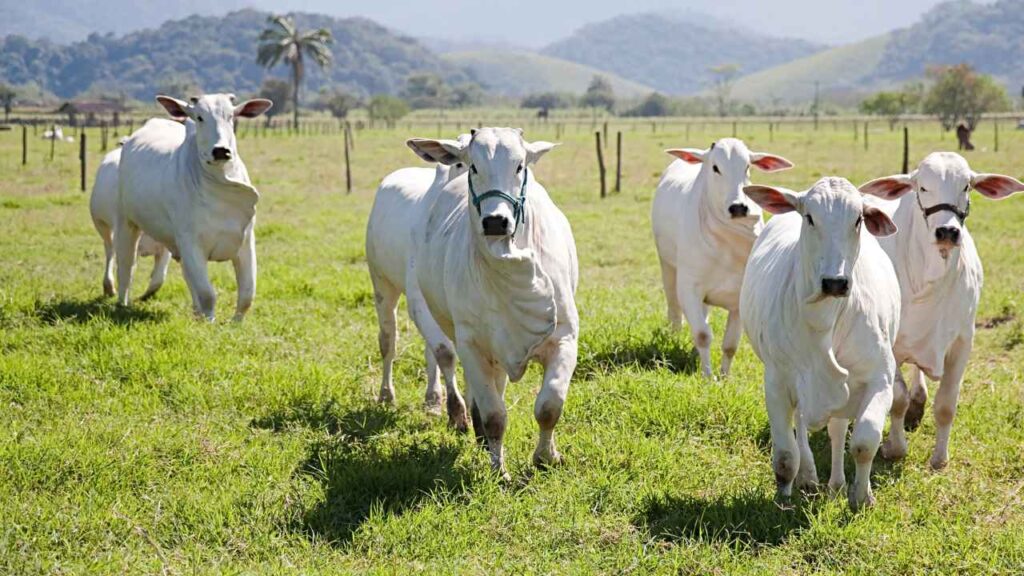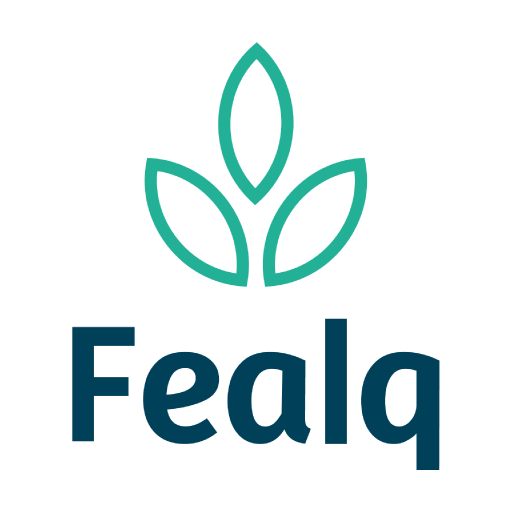Pasture technification and intelligent management are ways to reduce emissions without compromising production
Brazilian livestock occupies a prominent position in the national economy, being one of the main agricultural activities in the country. However, beef production faces criticism due to its environmental impacts. Some points that are highlighted are greenhouse gas (GHG) emissions and deforestation.
Recent studies highlight that one of the main challenges in Brazilian livestock farming is the lack of proper technical implementation. Inefficient planning in areas such as genetics, animal diet, or pasture management can undermine both the environmental sustainability and the economic competitiveness of production.
According to an article published in the journal revista Environmental Science and Pollution Research, beef production in Brazil emits high levels of GHG. The way it is currently conducted, this production emits more than double the limit necessary to meet the environmental goals defined by Brazil. These targets are part of the Nationally Determined Contribution (NDC), a commitment made in the Paris Agreement to contain global warming.
According to the same article, the sector’s emissions could range from 0.42 to 0.63 gigaton of CO2 equivalent (GtCO2e) by 2030. However, the limit to meet the NDC would be 0.26 GtCO2e. However, reducing meat production is not a simple and viable solution.
Food consumption increases with population growth, and the sector is crucial to the country’s economy. Thus, the researchers highlight that inadequate management is one of the main factors contributing to high emissions. The main way to reduce the environmental impact of livestock farming is to invest in technologies that make pastures more efficient and sustainable.
Integration and Standardization: Solutions to Reduce Emissions in Livestock Farming
A study published in the Journal of Cleaner Production, highlights that sustainable agricultural practices can significantly mitigate greenhouse gas (GHG) emissions. The research analyzed systems such as no-till farming, well-managed pastures, and crop-livestock-forest integration, using direct measurements of the main GHG components. These include carbon dioxide (CO₂), methane (CH₄), and nitrous oxide (N₂O).
The results show that integrated and intensified systems sequester more carbon in the soil and reduce emissions, especially when compared to extensive monocultures. However, the study warns that a lack of methodological standardization hampers reliable estimates of net emissions and comparisons across different agricultural systems.
Without consistent methods, these systems cannot qualify for certification programs or carbon markets. The research also reveals that current measurement methodologies vary in units, have low repeatability, and lack essential supporting data. These shortcomings hinder the comparison of results and the assessment of the climate impact of adopted practices.
According to the study, most research is concentrated in the South and Southeast regions of Brazil, leaving important gaps in the Cerrado, Amazon, and Caatinga biomes. This uneven distribution limits the understanding of GHG fluxes across different regions and soil-climatic conditions. The study recommends expanding in-field measurements of CO₂, CH₄, and N₂O and standardizing methodologies to ensure robust and comparable data.
The Need for Transformation in Livestock Management
In 2024, export values were surpassed month after month, setting a new record for beef exports. A total of 2.89 million tons were exported—26% more than in 2023.
However, to ensure long-term competitiveness, the sector must adopt strategies that reduce environmental costs and promote sustainable management practices. These actions include methane emission quantification, the influence of animal genetics, rumen and diet manipulation, as well as proper pasture management.
Quantification of Methane Emission (CH₄)
The estimation of methane emissions in animal production can be carried out by several techniques, which vary in cost, accuracy and necessary infrastructure. Traditional methods include indirect predictions, based on the diet of ruminants, such as in vitro assays. They also involve direct measurements made on animals in confinement or in the open field.
The in vitro fermentation (TFI) technique is widely used to predict CH₄ emissions by incubating feed with rumen fluid under anaerobic conditions. During the process, the volume of gas produced, ammonia nitrogen (NH₃-N), short-chain fatty acids (SCFA) and organic matter degradability (BMD) are measured. However, in vitro results may differ from those obtained in vivo due to microbial adaptation.
For direct measurements in confined animals, the respiratory chamber is considered the gold standard, offering high accuracy. In field systems, less invasive methods, such as the use of sulfur hexafluoride (SF₆), allow for continuous monitoring.
The GreenFeed system, for example, draws the animals into a portable chamber for periodic measurement. Empirical and dynamic mathematical models are also used to estimate CH₄ based on dry matter intake (DMI). These models are especially useful when direct methane measurements are not feasible.
Enteric fermentation accounts for 45.5% of global GHG emissions in livestock. Other factors include feed (22.4%), manure (12.8%), land use (10.9%), post-farm processes (5.4%), and on-farm energy consumption (3%).
The choice of measurement technique depends on the purpose of the study, the accuracy required, and the available infrastructure. It also considers the impact on animal behavior and the experience of the team involved.
Influence of Animal Genetics
Genetics influences the growth of acetogenic microorganisms, which are capable of converting compounds like carbon dioxide (CO₂) and hydrogen (H₂) into acetate. These microorganisms compete for H₂ usage with other groups, such as archaea. Archaea, in turn, use H₂ to produce methane (CH₄), directly competing with acetogens for the same resource.
When acetogenic microorganisms use H₂ to produce acetic acid, they reduce the availability of this gas for archaea, leading to decreased methane production. While acetogens help reduce CH₄ emissions, the acetic acid they produce can be used as an energy source by the host animal.
Studies involving strategies such as rumen microbiota transplantation show that, after a short period, the microbiota tends to return to its original state. This behavior indicates the influence of host genetics on microbial composition. Additionally, animals with higher feed efficiency — that is, those that make better use of nutrients — tend to emit less methane per unit of product.
Rumen and Diet Manipulation
Rumen fermentation also generates short-chain fatty acids (SCFAs), such as acetate, propionate and butyrate, which participate in the animal’s energy metabolism. In addition, gases (CO₂ and CH₄) and microbial biomass are formed, which provides essential amino acids.
The amount of CO₂ and CH₄ produced depends on the profile of the SCFAs formed. The higher the ratio of butyrate and acetate to propionate, the more H₂ and CO₂ are generated, favoring the production of CH₄. This process prevents the accumulation of H₂ in the rumen, impairs enzymatic activity and microbial growth, and compromises the animal’s use of nutrients. Therefore, diets that increase the production of acetate and butyrate tend to increase methane emissions.
Thus, dietary strategies that improve fiber quality and increase soluble carbohydrates, proteins, and fats can reduce emissions. These changes influence the fatty acid profile and decrease the production of H₂ and CO₂, also reducing the formation of CH₄.
Pasture Management
Properly managed pastures can reduce GHG emissions, especially if there is intercropping of grasses and legumes. Plants such as leucaena and forage peanut improve the diet and promote greater animal consumption and productivity.
In tropical regions, native trees offer natural supplementation in the dry season, reducing CH₄ production and promoting carbon sequestration in the soil. The inclusion of trees and shrubs also contributes to animal health. This is because the bioactive compounds present in leaves and fruits reduce rumen parasites.
Integrated Systems and Sustainable Livestock Farming
Integrated systems, such as crop-livestock-forest integration (CLFI), have been gaining ground as a strategic approach to promoting sustainable livestock farming.
By combining trees, pastures, crops, and animals, these systems increase productivity, diversify income sources, and reduce pressure on natural resources. The multifunctional nature of these arrangements supports more efficient use of soil and water. In addition, they significantly contribute to animal welfare and the restoration of degraded areas.
Among the environmental benefits, the potential of integrated systems for carbon sequestration and GHG emission mitigation stands out. These features make integrated systems valuable allies in addressing climate change.
The inclusion of strategic forage species, such as Tithonia diversifolia and Chloroleucon acacioides, has shown positive effects on animal performance and system sustainability. Furthermore, the presence of tree components helps regulate the microclimate, conserve biodiversity, and improve soil quality. Altogether, these elements reinforce the role of integrated systems as nature-based solutions for more resilient and balanced livestock farming.
Joint Actions for a Low-Emission Future in Livestock Farming
The transformation of Brazilian livestock requires a joint effort between the government, the productive sector and academia. The adoption of appropriate management practices can not only reduce GHG emissions, but also improve the productivity and competitiveness of the sector. Investing in the training of producers is an essential step for Brazilian livestock to achieve a balance between economic development and environmental sustainability.
The ABC+ Plan (Low-Carbon Agriculture and Adaptation Plan) for example, is a public policy that seeks to encourage practices with less environmental impact. However, the adhesion of producers is still low, indicating the need for more comprehensive policies and clear incentives.
References:
Ovani, V., de Azevedo Olival, A., Morais, V. A., Bertolazi, A. A., da Silva Folli-Pereira, M., Eutrópio, F. J., … & Pereira, S. S. (2025). Achieving net-zero emission through greenhouse gases emissions reduction in animal production. In Agriculture Toward Net Zero Emissions (pp. 347-368). https://doi.org/10.1016/B978-0-443-13985-7.00023-3
da Costa, M. V., Debone, D., & Miraglia, S. G. E. K. (2025). Brazilian beef production and GHG emission–social cost of carbon and perspectives for climate change mitigation. Environmental Science and Pollution Research, 1-14. https://doi.org/10.1007/s11356-025-36022-1
By: Mariana Pezzatte Pollo, CCARBON/USP
How to cite this article:
POLLO, M. P. Good Practices for More Sustainable Livestock Farming. CCARBON/USP, 2025. Available at: <LINK>. Accessed on: DATE





